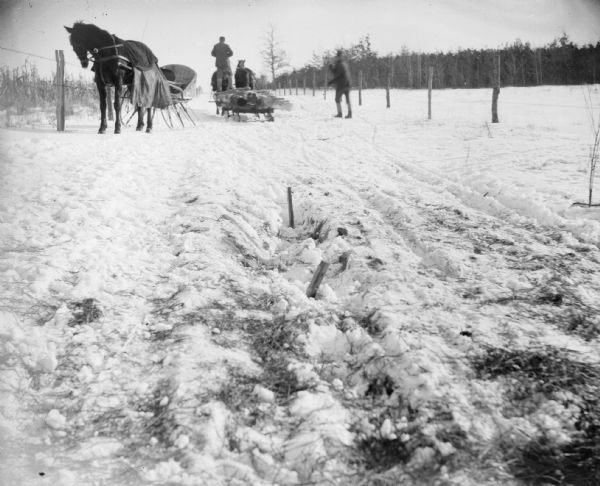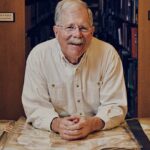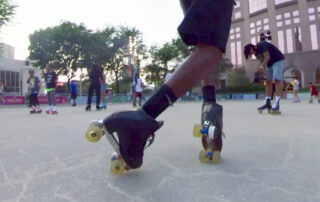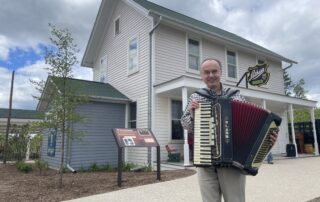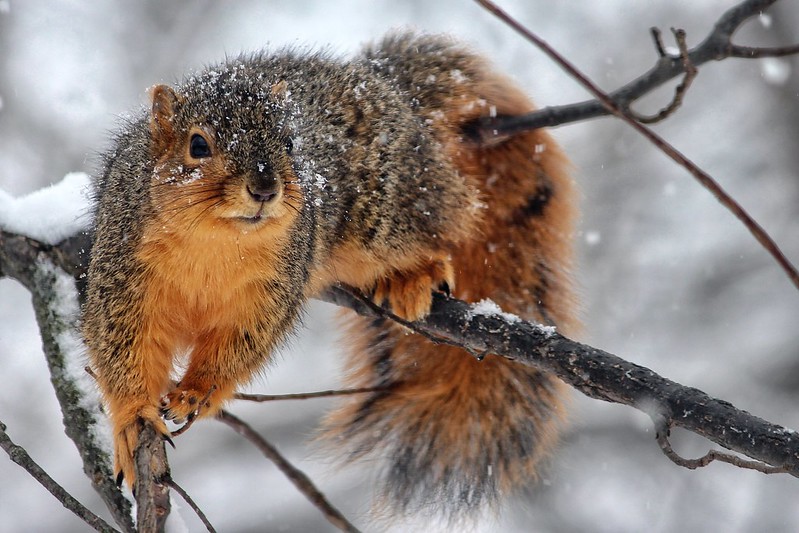Thousands of Milwaukeeans will clog the freeways to watch the Green Bay Packers take on Tampa Bay at home this Sunday. They’ll travel on roads nearly as wide as football fields, with four traffic lanes, generous shoulders, and rest stops the size of parks. The journey will take fans 90 minutes if they speed, twice that if they encounter heavy traffic or bad weather.
It wasn’t always that fast. Consider the odyssey of Increase Lapham, Wisconsin’s pioneer scientist. Early one winter morning in 1843, Lapham hitched a cutter to his favorite horse, Adelaide, and set off from Milwaukee for Green Bay. He carried with him coats, cloaks, and furs “sufficient for a winter exposure at the North Pole,” he recalled, all provided by his thoughtful wife.
Lapham was courting frostbite in a one-horse open sleigh, but the cold weather was actually an advantage. Heavy snows and freezing temperatures had turned much of the road into “a very smooth and hard track … over which we glided swiftly and easily.”
Our traveler encountered sleet at the edge of town, which was then 27th Street; an obstacle course of stumps near Menomonee Falls; and signs of Indian occupation in the Kettle Moraine, including wigwams, maple sugaring houses, and a pair of native women in the road. After traveling from dawn to dusk, horse and driver finally stopped for the night in Fond du Lac, which consisted of two houses and a blacksmith shop.
Lapham kept a more leisurely pace on his second day, following the military road along the eastern shore of Lake Winnebago. The day’s sights included Indian mounds, heavy sleds loaded with limestone, and the bustling village of Taycheedah, a crossroads settlement considerably larger than Fond du Lac.
After spending the night in Brothertown, Lapham was on his way by 8:00 the next morning. “The weather clear and cold,” he wrote, “I needed all my furs.” Lapham hit the Fox River near Kaukauna and followed it all the way into Green Bay. By nightfall, he had arrived at the Astor House, the settlement’s finest hotel, which wasn’t saying much in 1843.
A trip we can now complete in two hours of smooth driving took Increase Lapham three days of occasionally rough sledding. The journey we make in heated steel cocoons, tuned to the music of our choice, is the same one he finished with nothing but the winter sky overhead and his own thoughts for company. Although we still find plenty to complain about, it’s obvious that, relative to the pioneers, we’ve conquered both distance and hardship.
Few of us would go back to 1843, but I wonder if today’s comforts haven’t numbed our palates, if we haven’t drained our encounters with the world around us of their singular power.
A man of remarkable curiosity, Increase Lapham traveled “solitary and alone,” as he put it, alert to every shift in the outer landscape he crossed and the inner landscape he carried with him. “To a person of contemplative mind,” Lapham wrote, “this is by far the most agreeable way of traveling. The mind then has free scope to wander at random or to pursue certain courses of thought … as most interest us.”
How many Milwaukeeans, hurtling along the road to Green Bay this Sunday, will take the same opportunity?
